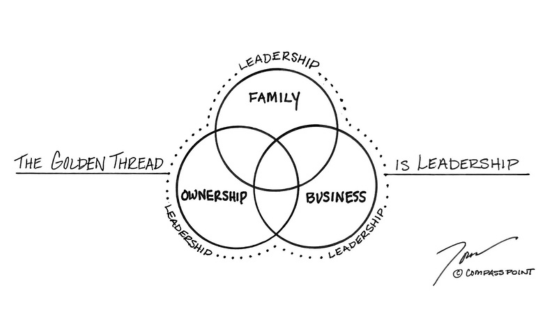FAMILY DYNAMICS / GOVERNANCE
Do You Have an EMP? It’s Time to Make One.

Picture this. You are a small business owner and you’ve been happily running your business with a group of dedicated employees for the last decade. All of a sudden, tragedy strikes in your family. You or a loved one is rushed to the hospital. How does the business continue running? Who will your employees look to for answers? What will happen to the business in your absence?
My hope is that no business owner ever has to worry about such a situation, but the reality is that many businesses are (or will be at some point) affected by such and event. The good news is that if your business created an Emergency Management Plan (EMP) before tragedy struck, the answers to all of those concerning questions about the business would be easily found by employees, and it would be (mostly) business as usual while you take care of yourself and your family.
An Emergency Management Plan is just that. A plan that details what needs to happen in the business if there is an emergency that takes the owner or other key leaders away from the organization for an extended time. It should be documented and accessible to your leadership team, so when an emergency does happen, the plan can be put into effect immediately.
To get you started, I’ve listed a few “emergency action items” that the EMP should include:
1. Contacting the business’ trusted advisors
List the organization’s trusted advisors and how to contact them. This may include your Business Attorney, Accountant, Board for Advisors, and any other key strategic partners that should be contacted if the owner is unable to lead.
2. Notify commercial banker
This would pertain to any business that has any outstanding business loans in order to ensure that loan payment obligations are being met. Another thing to consider… does anyone else besides the owner have the authority for signing checks or viewing important legal documents?
3. Notify any key clients or customers
It is crucial to give the clients a heads up that while there has been an emergency, operations will continue. This eliminates any assumptions that the clients may make about the organization and its future. It also helps to manage expectations of clients in terms of communication and interaction with key leaders.
4. Redistribute work to remaining leaders in the organization
With a good emergency management plan, it should be business as usual even with the owner/key leaders away from the business. Advanced determination of how work is redistributed will allow for business operations to continue with a minimum number of hiccups. Be sure to clearly indicate who will be accountable for the redistributed work and ensure that accountability is communicated and understood.
5. Indicate location of important documents. This could include documents such as shareholder agreements, Board of Advisors contact information, and the organization’s strategic plan.
While I hope the Emergency Management Plan never has to be used, it provides needed solace for business owners, family members and employees just knowing that it exists. And the best way to test your newly created EMP? Take an extended vacation – a month is ideal – and unplug from the business. An test run like this will help you see where the gaps are and allow you the ability to address them before it is truly an emergency.
You may also like…

BLOG | LEADERSHIP
The Multiplier That Makes Businesses Grow
If your leadership team isn’t strong, aligned, and equipped with the right tools, how can they bring your strategy to life? The short answer: they can’t. But the good news? You can change that with this critical ingredient.
Read More
BLOG | LEADERSHIP
The Golden Thread that Binds Family, Business, and Ownership
The most successful family businesses don’t leave leadership development to chance. They recognize that leadership isn’t just about a single person at the top – it’s about building a system that supports leadership at every level – and through each of the 3 domains of a family business. It truly IS the golden thread that binds.
Read More
BLOG | TRANSITION / SUCCESSION
From Empires to Enterprises: Succession strategies that make or break legacies
History provides us the benefit of hindsight and powerful lessons. Take Genghis Khan and Alexander the Great, both great conquerors. Yet one implemented a structured succession plan that ensured the survival and expansion of his empire, while the other's failure to do so led to the disintegration of his vast holdings shortly after his death. A strong succession planning is the ultimate competitive advantage.
Read MoreWhere Family Businesses Come to Grow & Learn
At Compass Point, we make it easy to get insights, training, tools, and articles straight to your inbox and help family business owners and their team continue to grow, learn, and lead.


